There are gardens with full-frontal exposure, and then there are gardens that look like fortresses. And neither extreme is satisfying for those who live, work and play there.
In her book
Landscaping for Privacy (Timber Press, 2011), Seattle design and horticulture writer Marty Wingate hits the perfect sweet spot, offering property owners an array of usable and beautiful design solutions and endless plant suggestions to achieve sanctuary in the front yard or backyard. This is the ideal resource that will ensure you have peace — and peace of mind — in your domestic landscape.
Inspired by the tips and solutions in her book, I looked for some of the creative ways designers on Houzz use plants and architecture to enclose, divide and obscure the landscape from the outside world. Here are some of the best.
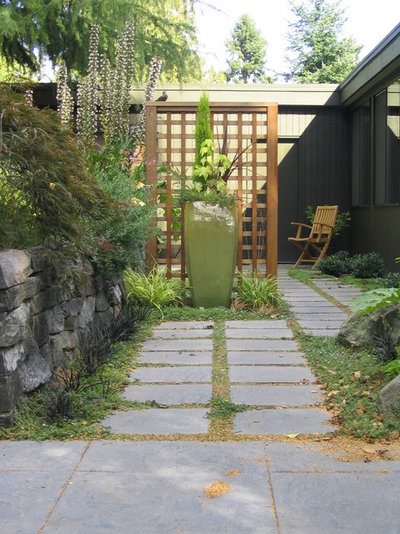
Banyon Tree Design Studio
In this entry garden, vertical lattice paneling is aligned on center with the axis of the pathway and frames a tall, elegant, planted urn. Together, the screening and the container help protect the interior seating area from view, although you can catch just enough of a hint of what's inside to explore further.
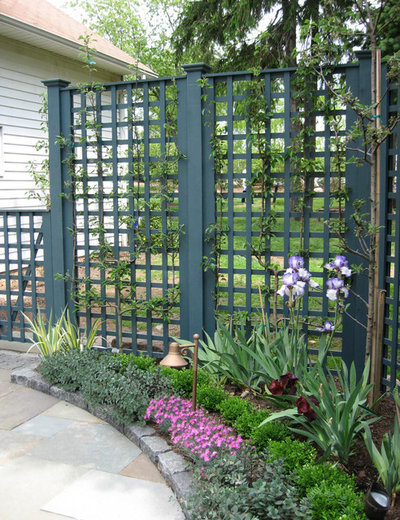
Susan Cohan, APLD
Vertical panels in a square lattice pattern protect a side yard from view. I love the beefy posts and lathing as well as the dark teal stain, making this solution people and plant friendly. For those within this space, it's nice to glimpse neighborhood activity on the sidewalk or street without feeling exposed.
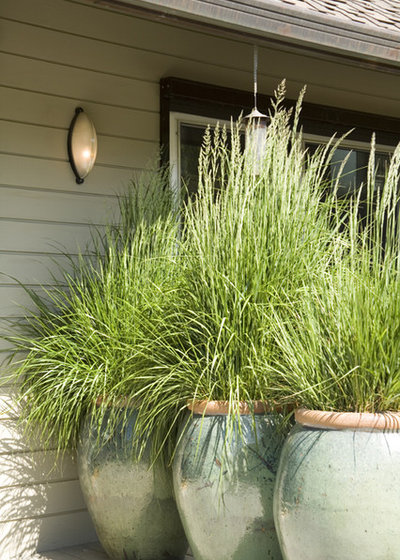
Mark English Architects, AIA
Who wants a solid fence next to an entry door or a bedroom window? This soft, elegant solution is far preferable. A trio of Ali Baba–scale pots, each planted with a stunning ornamental grass, creates a kinder, gentler barrier with style.
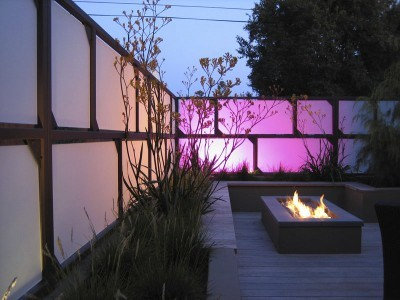
Jeffrey Gordon Smith Landscape Architecture
We've seen opaque panels inserted between fence posts before; it's a typical architectural solution, especially for contemporary spaces. But here's an inspiring and far more interesting way to amp up the drama with the same materials. Square and rectangular panels are offset to create an interesting, rhythmic fence pattern — let's call it Mondrianesque. Colored uplighting (or perhaps it's backlighting) makes this space moody and modern, especially at dusk.
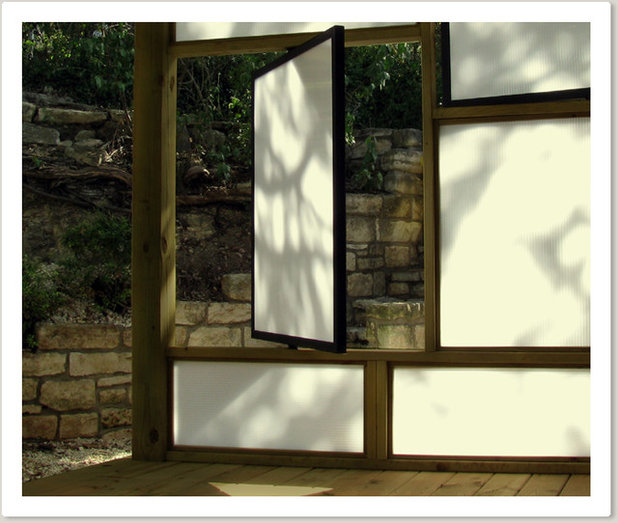
breaux design group
Here's another clever way to use fence panels for privacy (or not): Make individual sections movable. This one pivots at the center to allow light or breezes to flow into an interior courtyard.
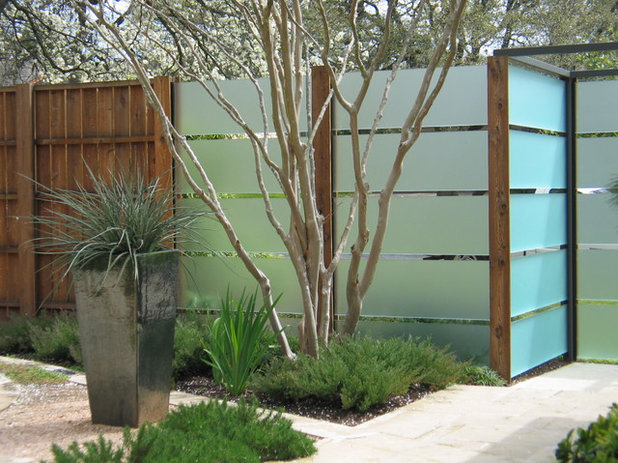
Tim Cuppett Architects
Opaque panels look like glass, but I suspect they are some kind of unbreakable material. By slightly spacing each horizontal panel, the designer created an interesting see-through effect. This detail pairs beautifully with the dark-stained wood posts and more traditional fencing at the left.
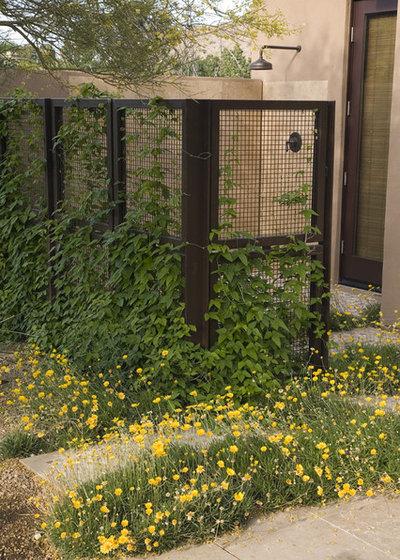
Carson Poetzl, Inc.
The outdoor shower is semiprivate thanks to a freestanding L-shaped screen that doubles as a trellis for climbing vines. The wire mesh panels are fabricated with industrial screening, available in a wide array of gauges. Metal posts hold the panels, and everything has been allowed to weather naturally. If water splashes from the showerhead, it's no big deal; the iron continues to weather to that gorgeous rust patina, and the vines get the moisture they need to flourish.
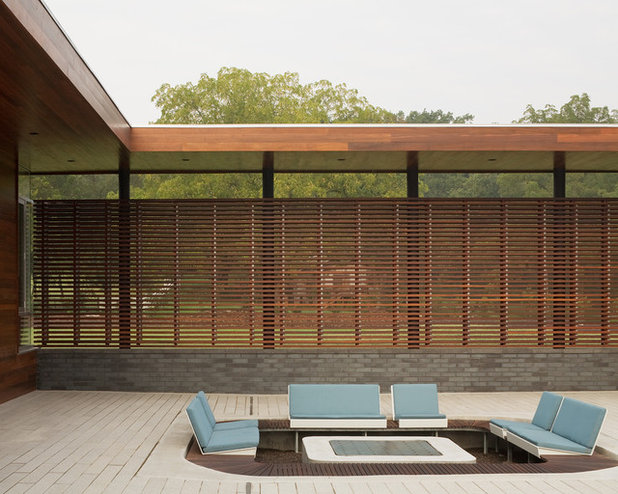
A breezeway passes along the sunken patio, but for privacy, the seating area is only partially revealed. Almost like louvred shutters, the horizontal slatted wall creates a sense of enclosure while allowing light to brighten the space. This is also a great windbreak solution to protect people seated here from gusts and breezes.
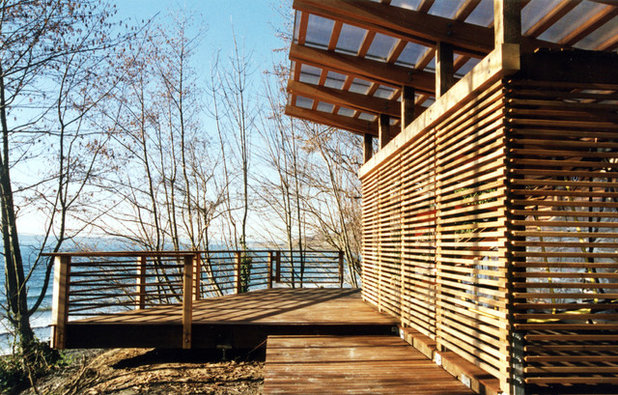
BAAN design
This is a storage shed, but you can see why I chose to feature the streamlined use of horizontal slats of wood. Spaced as they are, both light and air can circulate through the structure. But like the previous project, the overall effect is sleek and modern. I'd love a fence like this across my property. It would let me look out onto the world but keep anyone inside feeling less exposed.
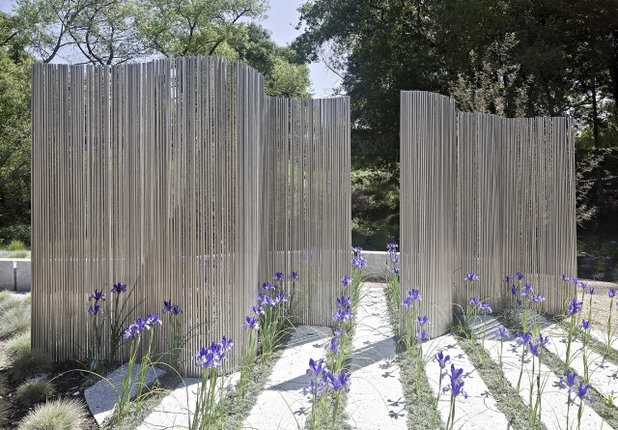
WA Design Architects
Like a fluid steel wall, this ubermodern screen is part sculpture and part privacy fence. I absolutely love how it is integrated with the very sleek planting scheme at its base. The linear ground cover and floral bands echo the rigid vertical lines created by the steel rods. But nothing feels geometric, thanks to the wavy installation and the break in the flow to allow someone to pass through. Wow!
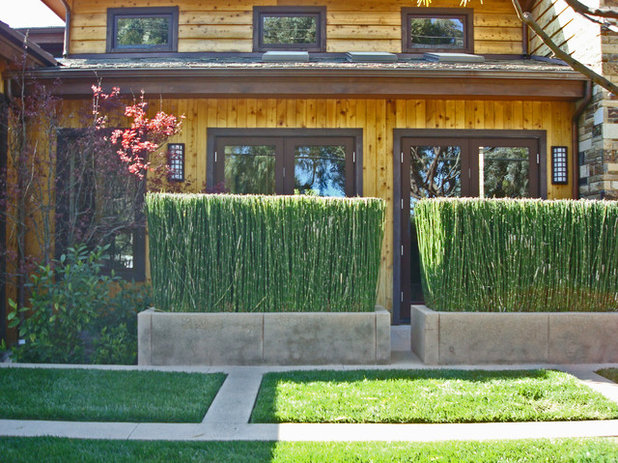
Stephanie Ann Davis Landscape Design
Horsetail, or
Equisetum hyemale, is one poorly behaved plant, known to take over entire landscapes. That is, unless you plant it in a place where its roots are contained. That's what you see here, and it's a nifty way to both screen out the world and bring green into view. The raised concrete planters are exactly what's needed to corral the densely planted stands of horsetail.
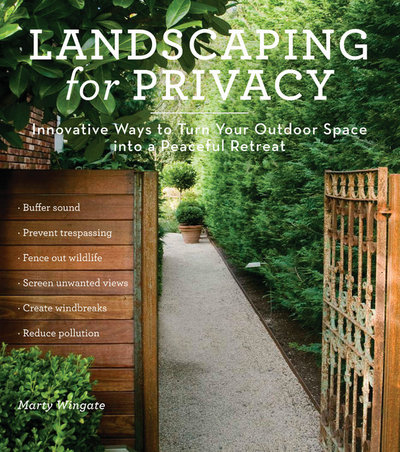
Debra Prinzing
Seattle horticulture writer Marty Wingate's
Landscaping for Privacy is an excellent resource for anyone who needs to add screening, barriers or buffers to their private world. The cover of the book features a fence made of sustainably harvested ipe, a wood from South America, designed by Scot Eckley of Seattle-based Scot Eckley Landscape Design.
More:Pavers for the Perfect Patio and Path
Step Into a Refreshing Outdoor Shower
The Yard: Are You Ready to Lose the Lawn?





